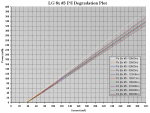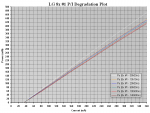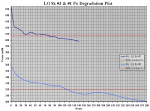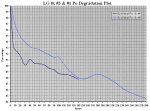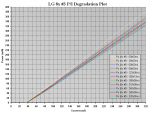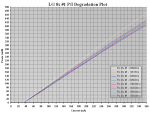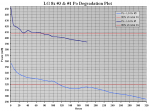IgorT
0
- Joined
- Oct 24, 2007
- Messages
- 4,177
- Points
- 0
A bit off topic...
I recently built a pointer for someone with an SF-AW diode. At 155mA, the yellow halo was very noticeable. I have never seen this with PHRs or GGWs, so I was a bit intrigued. I thought it may be fluorescence from something in the module, but I could not find any possible source other than the die.
I didn't notice it with an Aixiz 405 lens but it was clearly visible with the 405-G-1. Maybe I just wasn't looking hard enough?
Hopefully the yellow halo is not a "bad" thing.
I first started noticing it a year and a half ago, when i had a bad eye infection, couldn't wear lenses and had to wear my glasses, which block 405nm quite a bit.
I was also intrigued, cos i thought it was a new thing, but it was the glasses that allowed me to see it. Usually it is obstructed by the 405nm glare.
Later i started noticing it even more often when shining various diodes through my wavelength sorting filter. It would block most 405nm, and pass the "yellow halo" so it was very noticable there.
It really scared me at first! For a while i was weeding diodes with it out from the rest, but then i realized it is too wide spread. Barelly any diode was completelly without.
Then i started writing it down next to PIV data with each test (the presence and intensity), to see if those diodes would die sooner, but it never happened. I was unable to find any correlation between yellow halo presence/intensity and diode lifetime.
Most 405nm diodes have it in widelly varying intensities, but without a filter or protection glasses it is hard to see due to the intensity of the spot.
The reason you only noticed it with the 405-G-1 is that your diode must have a stronger halo than most, and that short FL lenses like the 405-G-1 increase the size of side projections, making it come out from behind the glare.
I wouldn't worry about it.
Only thing i haven't seen before is the halo changing in intensity, which is why i'm paying more attention to this 8x now, to see if it's really changing, or if i just happened to notice it now, and not during earlier tests by accident....
If it is actually changing, it could be a further indication of degradation in this case.
The number 3 plot looks like a copy of the #1 plot, scaled out in time 5x... unless it's just a coincidence of measurement error, it looks as though the #1 diode is degrading at 5x the speed, but the same pattern.
The curves do indeed show striking similarities, and you can be sure, i considered all sorts of possible errors, and eliminated them one by one, when i saw that power is suddenly higher with both diodes.
When i turn off the cycler, i wait for diodes to cool off, then i attach them to the diode analyzer, and warm them back up a bit, till they are exactly where they were during the previous plot. I use Vf for confirmation, that the temperature of the diode itself actually matches the previous testing, and don't allow more than 0.01mV of difference before making the next plot.
I don't know why or how, but it seems that powers of both diodes did actually go up a bit once or twice!
However, the graphs are similar, but not quite copies. The differences could be the result of different diode "toughness"...
We'll know more in a bit, only 30 cycles to go till 140 and 280 hours!
Last edited:




